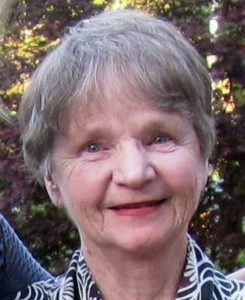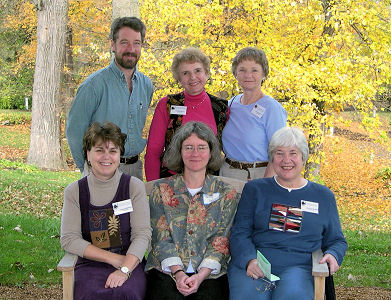Founded in 1993, the Indiana Native Plant Society (formerly the Indiana Native Plant & Wildflower Society) celebrates its 30th Anniversary in 2023. Throughout these years, our vibrant organization has grown robustly in both membership and wisdom while pursuing our mission.
Following is a brief account of the Indiana Native Plant Society’s initial year, prepared and submitted by Ruth Ann Ingraham, Co-founder and Historian, July 12, 2023
An Auspicious Beginning
In the autumn of 1991, avid gardener and author Carolyn Harstad spoke to the Indianapolis Museum of Art’s (now Newfields) Horticultural Society about wildflower propagation. She encouraged ‘Hort Soc’ to organize a native plant society for Indiana and collected names of interested persons.
February 10, 1992, botanist-photographer Kay Yatskievych, spoke to ‘Hort Soc’ about her Field Guide to Indiana Wildflowers, then in process. Kay lamented, “Indiana is the only state east of the Mississippi River without a native plant society.” Attendee Ruth Ann Ingraham chatted afterwards with Kay and Sue Nord; she promised to call a meeting to form a native plant society and to notify Kay and Sue of the date.
That spring, Carolyn attended a wildflower workshop sponsored by the Garden Club of Indiana. While there, she met Amy Little Mason, the club’s president from Terre Haute, and speaker Dr. Michael Dana, professor of horticulture at Purdue University. Dana had recently spent a sabbatical leave at the Lady Bird Johnson Wildflower Center in Austin, Texas. Amy and Mike had considered organizing a native plant group. They too collected names of interested folks.
A year passed when on February 10, 1993, Ruth Ann and husband Joe Ingraham attended another ‘Hort Soc’ meeting. Sue Nord asked Ruth Ann if she had called that promised meeting about organizing a native plant society. With regret, Ruth Ann answered that she had not. But Sue’s question was the necessary spur.
Ruth Ann, along with husband Joe, invited Carolyn Harstad, Bill Brink, renowned birder who grew native plants in his Broad Ripple yard, and Sue Nord, Chuck Gleaves and Chris Turner, members of IMA’s horticultural staff, to meet the evening of February 25, 1993, at their Indianapolis home, 6106 Kingsley Drive. Eight inches of snow fell that day and only Bill, in a four-wheel drive vehicle, borrowed from Chris Carlson, made it. A few days later, after the streets were cleared of snow, Ruth Ann and Carolyn met, shared lists and notes, and determined whom to invite to an initial meeting.
Carolyn, Bill, Ruth Ann and Joe, the four co-founders, composed a letter, dated March 11, to fifteen key individuals. The letter invited them to attend an exploratory meeting on Wednesday, April 14, in the conference room of the Marion County Extension office, 9245 N. Meridian. Attending were Dr. Rebecca Dolan, Butler University; Lee Casebere, DNR’s Division of Nature Preserves; Becky Lomax; Jeffrey Maddox, The Nature Conservancy; Bill McKnight, Park Tudor School; Sue Nord and Chris Turner, IMA’s Horticulture Department; Jean Vietor, nature watercolorist; Kay Yatskievych, botanist with the Missouri Botanical Garden; Carolyn and Peter Harstad; Ruth Ann and Joe Ingraham; and Bill Brink. Leading up to the meeting, Carolyn requested copies of mission statements, constitutions, by-laws and annual programs from every state with a native plant and/or wildflower society. Bill’s company, The Great Outdoors, contributed $100 in “seed” money.
Peter Harstad, Executive Director of the Indiana Historical Society, conducted the meeting. The group named temporary officers, planned for the next meeting, accepted charter contributions of $10, named a constitution and by-laws committee, and began to define a mission. Some in attendance wondered how this organization would differ from similar groups such as The Nature Conservancy and Indiana Land Trusts.
Possible goals and activities of a native plant society were:
- Understand and use native trees and shrubs.
- Understand how non-native plants can spread and become “quite prevalent,” particularly in natural areas.
- Promote use of native plantings in public spaces such as the IMA, the Water Company Canal, and the White River State Park.
- Educate self and others.
- Organize plant rescue programs.
- Help people identify native plants.
- Conduct field trips.
- Take the enthusiasm of this group to help preserve and appreciate native plants.
- Promote maintenance of green space.
- Bring together diverse groups.
- Produce a newsletter.
- Create a strong political base for increased awareness.
- Work with INDOT for “no spray” areas.
- Eliminate the stripping of seed sources by well-meaning people.
- Learn to utilize native plants in our gardens.
1993: A Rousing Formative Year
May 2, twenty-two attended a meeting in the Board Room of the Indianapolis Museum of Art. Indiana Native Plant and Wildflower Society (INPAWS) became the organization’s name. Carolyn presented proposed by-laws. Following sack lunches, Bill Brink, Sue Nord, and Chris Turner led a wildflower walk on the grounds of IMA.
June 5, thirty-three attended a meeting at the Holliday House, Holliday Park. A constitution and by-laws were ratified. Chris Carlson volunteered to produce the first newsletter.
July 7, twenty-nine attended a meeting in Butler University’s Gallahue Hall. After the meeting, Dr. Dolan led a walk along the canal to Butler’s restored prairie and historic Holcomb Gardens before returning to introduce attendees to the Friesner Herbarium.
August 14, the group met in the gardens at Allison Mansion, Marian College. A dues structure was approved to begin in 1994. First year Charter membership dues remained at the $10 level through 1993. Elected officers were: President, Jeffrey Maddox; Vice-President, Bill Brink; Corresponding Secretary, Ruth Ann Ingraham; Recording Secretary, Anne Wilson; Treasurer, Jean Vietor. Following the meeting, attendees toured the college’s wetlands.
September 14, Mike Dana welcomed thirty-one attendees to Purdue University’s Ag Farm where blocks of prairie plants grew from plugs grown in the greenhouse along with plants from a germ plasm collection of a Nebraskan plant breeder. The intention was to breed warm season grasses for northern forage. Afterwards, many drove northwest up Highway 52 where prairie remnants grew along the railroad tracks.
October 9, INPAWS held its first fundraiser, a Plant & Garden Goodie Auction, at Holliday House. Auctioneer and member Roland Kontak conducted the auction which raised $1,084.
INPAWS mailed invitations to a wine & cheese reception in honor of author Michael Homoya and photographer Lee Casebere, whose recently released book, Orchids of Indiana, earned rave reviews. The event on Friday, November 12, took place in IMA’s Horticulture Study Center, the lower level of Oldfields.
November 20, Bill McKnight, plant ecologist, led a hike at Pine Hills Nature Preserve, Montgomery County.
To celebrate an outstanding inaugural year, members and guests “partied” on December the 10th at the home of Carolyn and Peter Harstad, 5952 Lieber Road, Indianapolis.
1993 closed with 148 charter members and a bank balance of $2,648.23.



